Zeiss Milvus 85/1.4 vs Zeiss Otus 85/1.4 vs Zeiss Planar 85/1.4 – Comparative Lens Review
Build Quality
All three Zeiss lenses are exceptionally well manufactured. Build quality is among best in the industry, but there are few important differences to mention. The brief look on all three lenses will tell us probably most important thing to know – Planar is significantly smaller (and lighter) than other two lenses.
For some, this difference might be decisive, because size and weight are often one of the key priorities. Beside much more complex optical design with almost double glass elements, other two lenses have their own advantages of course. Let’s take a look on each of them.
1 Zeiss Otus 85/1.4 ZF.2
Otus 55/1.4 was first to introduce new Zeiss DSLR lens design, and Otus 85/1.4 is following in the same direction.
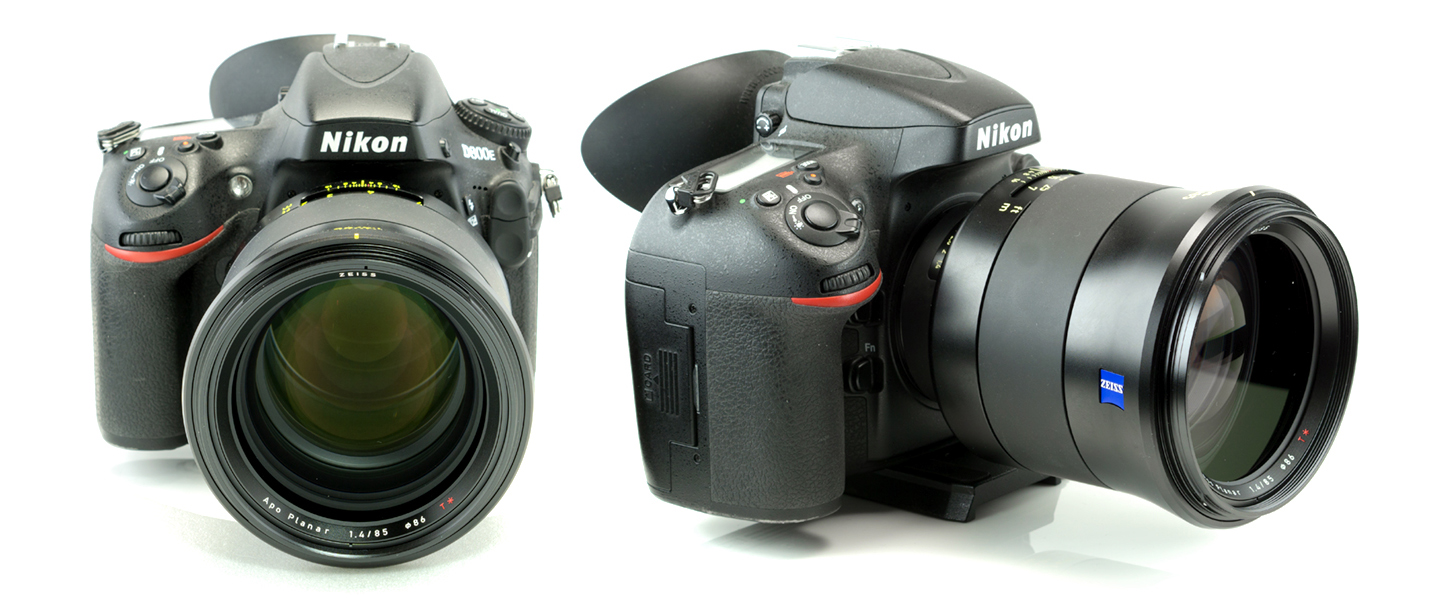 Made of metal and glass mostly, lens feature rubberized focus and aperture ring (Only ZF.2 version). That makes lens handling somewhat more convenient, especially in the cold weather, but on the other side, rubber itself is very prone to fingerprints, light scratches and dust.
Made of metal and glass mostly, lens feature rubberized focus and aperture ring (Only ZF.2 version). That makes lens handling somewhat more convenient, especially in the cold weather, but on the other side, rubber itself is very prone to fingerprints, light scratches and dust.
Using lens just a couple of days will leave marks on the rubberized parts and probably influence its resale value. On top of that, used rubber doesn’t really look and feel very solid (it feels rather pleasing and soft) and the big question is its durability in time. I don’t want to even think, how much will Zeiss charge for replacing it.
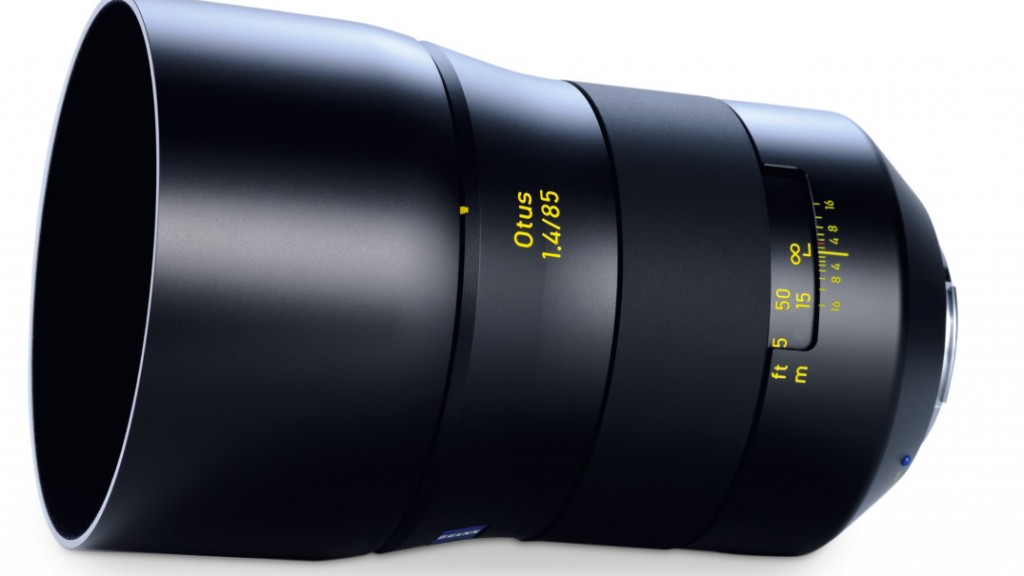
This image is property of Zeiss a.g. Original is published here – http://lenspire.zeiss.com/en/otus-1-485-the-new-world-class-lens/
At the rear side of the lens, we will find 30mm glass element (aspherical) which is positioned almost in line with the contacts at infinity focus settings. Shifting focus toward close range will pull back rear lens element for approx. 1 cm inside the lens, leaving only black tube around. This construction should insure inner reflection free performance. On the Nikon (ZF.2) version we can find rubberized aperture ring above the mount, followed by distance scale in both feet and meters. There is also DOF scale. All numbers and letters are engraved and colored in yellow. The mount itself looks very solid, but Otus doesn’t have weather sealing protection (gasket ring) around the mount, which is shame for the lens in its price category.
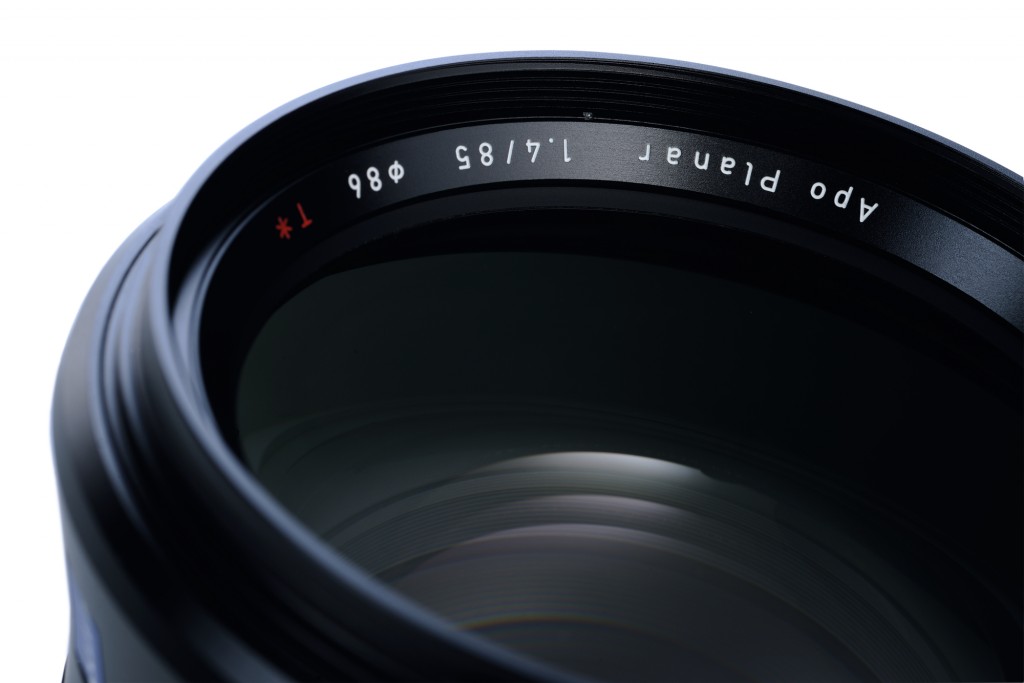
This image is property of Zeiss a.g. Original is published here – http://lenspire.zeiss.com/en/otus-1-485-the-new-world-class-lens/
Focus ring, is approx. 30mm wide, which in combination with super smooth focusing ring, delivers unique and excellent manual focusing experience. 270° focusing throw ensures outstanding precision when critical focus is needed. Getting back to focusing, I think that it might have bearings inside, because such an even dampening in its whole range is really incredible construction achievement. Maybe only most expensive Leica or old Contarex lenses would come close to this manual focus enjoyment.
Front of the lens feature massive filter thread of no less than 86mm!!! If you plan to put filters on this lens, another significant investment should be expected.
Lens comes in nice and big paper box, together with all metal Lens hood and both caps. However, you won’t find any carrying box or at least pouch for transporting or storing the lens, which is slightly hard to digest considering the price.
All in all, Otus 85/1.4 is big, heavy, extremely well made, with amazingly smooth and precise manual focusing, huge filter diameter and no weather sealing. Love or hate its “new” design, it says at the first touch – I am professional optical instrument!
2 Zeiss Milvus 85/1.4 ZF.2
Milvus lens line, went in the Otus direction. Both lines have similar design, and I believe they are made from similar materials.
One of the key differences between Otus and Milvus is that Milvus lenses are moisture and dust protected (to complete protection, clear front filter is needed). To ensure weather sealing, there is insulation bellow each moving element and also blue rubber ring around the mount. Zeiss sometimes makes moves that is hard to understand. Why their flagship – Otus line lack weather sealing is beyond my understanding, but the fact that Milvus has this feature, is great plus for potential buyers, especially professional field photographers.
31mm rear element is protruding at the infinity settings, while it hides for approx. 1cm inside the lens when focused to 0,8m. (Above image is showing only sealing, the lens is not Milvus 85/1.4)
On the bottom of the lens, we can also find de-clicking aperture switch – which upon selected position allow click-less aperture feature, very useful for video shooting. This feature was first presented in Zeiss Loxia line.
Moving above, we will find rubberized aperture ring, which is rather thin and being close to the camera body when lens is mounted, it might be slightly harder to adjust for people with strong fingers. Further above, there is distance scale in feet and meters and DOF scale. All letters are engraved, so they should be better protected from paint peeling.
Distance scale is engraved on the manual focus ring which extends to the very edge of the lens. Part of that ring is rubberized with a 20mm wide strip, which improves grip. Rubber seems to be the same as on Otus lens, soft and pleasing but very prone to collect dirt and light scratches. The huge focus ring turns up to almost 270° slightly more than Otus, allowing very precise manual focusing. However focusing feels different from the Otus. It is well dampened but not as smooth and fluent as with Otus. Overall, I liked Milvus manual focusing least from all three lenses, but it might loosen a bit with more usage.
On the front we will find 60mm diameter anomalous partial dispersion glass element, that is moving inside-outside with change of focus. 77mm screw mount filter thread is outlined with the lens hood bayonet mount. Lens hood is all metal and it fits perfectly on the lens, making hardly visible spacing distance. With a lens hood, Milvus looks like nice (but huge) monolith device.
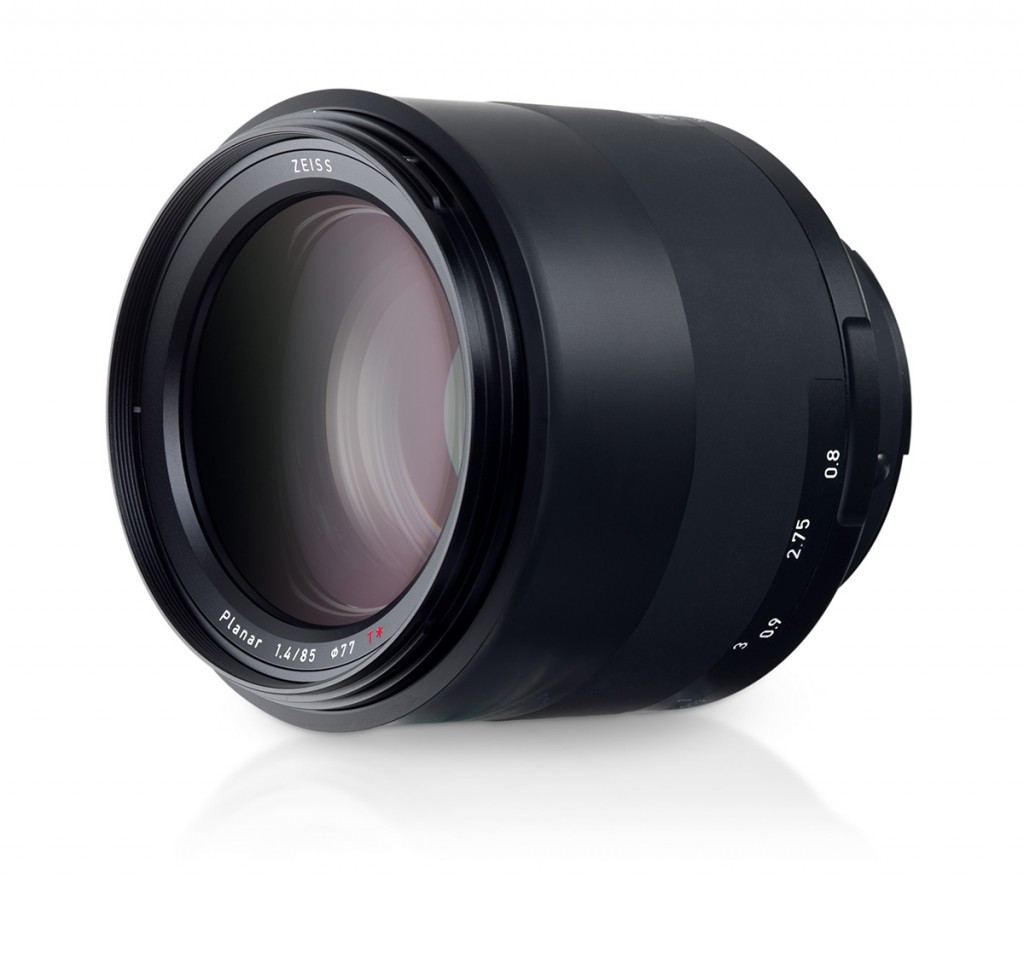
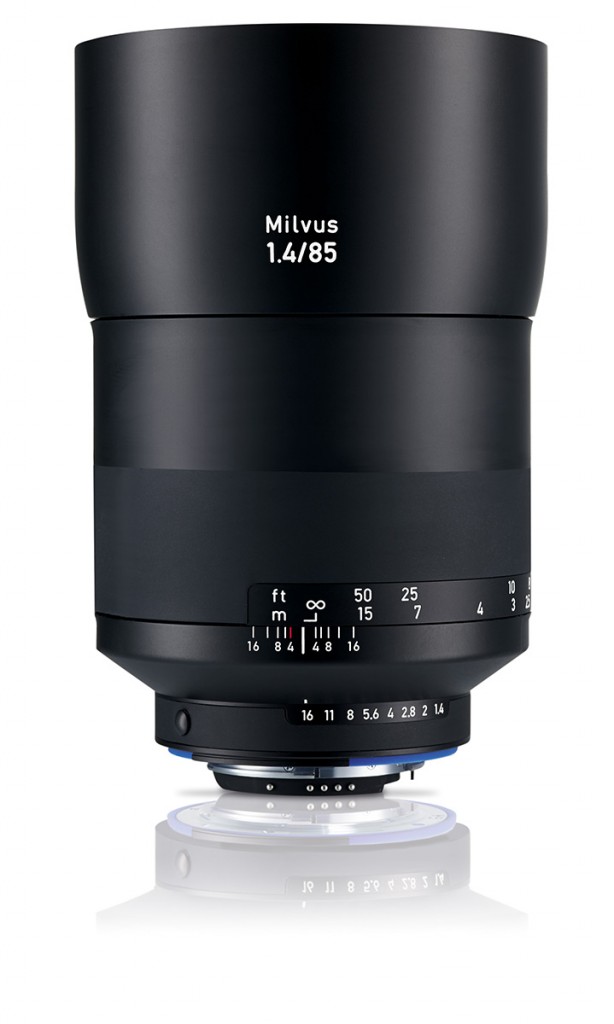 Milvus 85/1.4 feels and look really good. In comparison to Otus, with which it shares same number of elements and groups (11/9), it is slightly shorter, but also slightly heavier. Build quality is exceptional but it feels just a little behind Otus when you hold them both in hand. I am not sure why, it could be slightly different paint, metal or probably different focus helicoid construction, most probably is just my personnel imagination.
Milvus 85/1.4 feels and look really good. In comparison to Otus, with which it shares same number of elements and groups (11/9), it is slightly shorter, but also slightly heavier. Build quality is exceptional but it feels just a little behind Otus when you hold them both in hand. I am not sure why, it could be slightly different paint, metal or probably different focus helicoid construction, most probably is just my personnel imagination.
Lens comes in slightly smaller paper box than Otus, together with both caps and lens hood.
Being weather sealed with large and precise manual focus ring, 270° focus throw and de-clicking aperture, it actually beats Otus by specification. On the other hand, I would like to see somewhat smoother focusing.
3 Zeiss Planar 85/1.4 ZF
We got Planar 85/1.4 ZF for test from my friend Martin Zeljak. Lens wasn’t new, but in a perfect condition as you can see from the above image. The difference between ZF and ZF.2 version is in existence of electronic communication with camera for the ZF.2 version. Optically, they are supposed to be same. Planar is very compact in comparison to other two lenses, but its build quality is as good as it gets for traditional design. Metal and glass, no rubber, no fancy features such as de-clicking.
All metal focus ring with fine ribbing, wide just enough for finger grip, has a throw of approx. 245°, which is maybe not as generous as the other two, but more than enough for very precise focusing. Focus scale is engraved in meters and feet, and there is also DOF scale.
Aperture ring (only ZK, ZF and ZF.2 version), is bellow the focus ring and being very thin, it’s sometimes hard to find it without looking at the lens, but it is far enough from the mount for comfortable operation.
72mm filter thread surrounded by lens hood bayonet is the only silver part on the black barrel. Lens hood is also metal and it fits well, but far from Milvus or Otus precision.
Lens comes in much smaller paper box with the caps and hood included.
Zeiss Planar 85/1.4 ZF is traditional looking lens. It’s a testament of precise craftsmanship, high quality materials and functional design. I love how the lens looks and feels in hand, much more than Otus or Milvus but than, I am old school photographer…
To help this page survive, your donation will be highly appreciated.
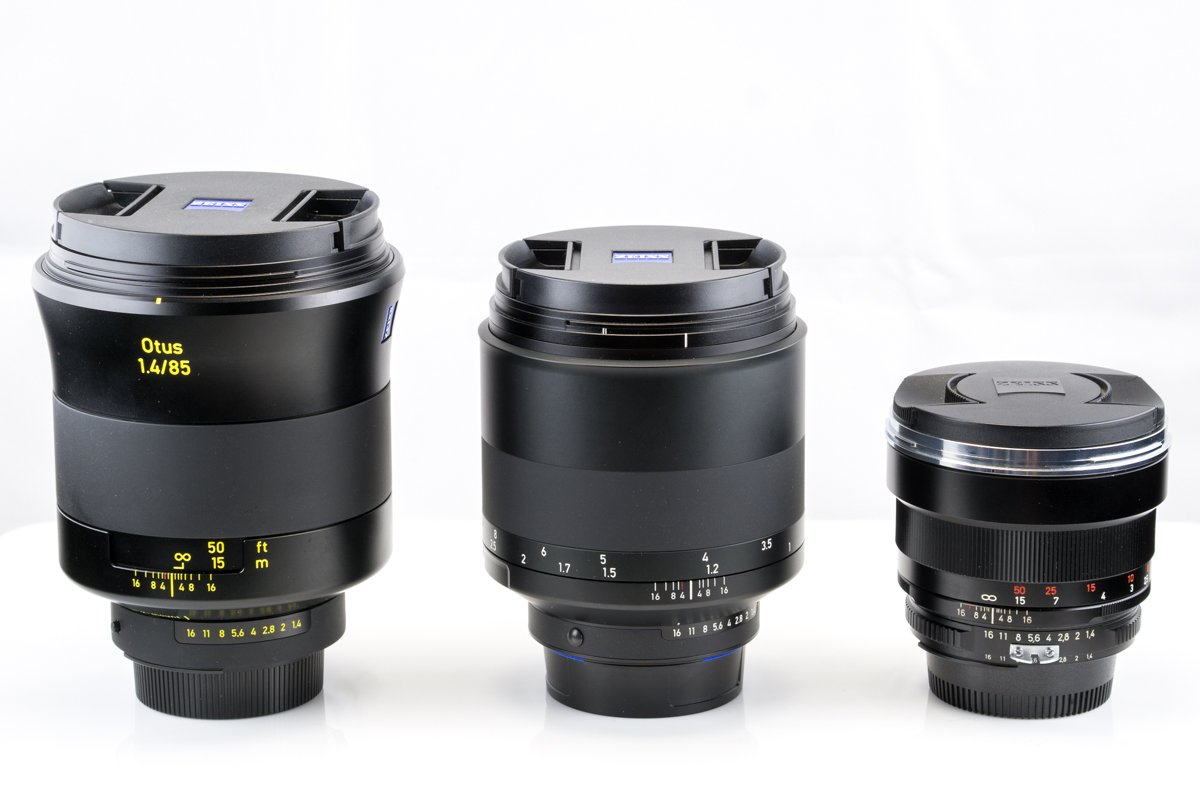
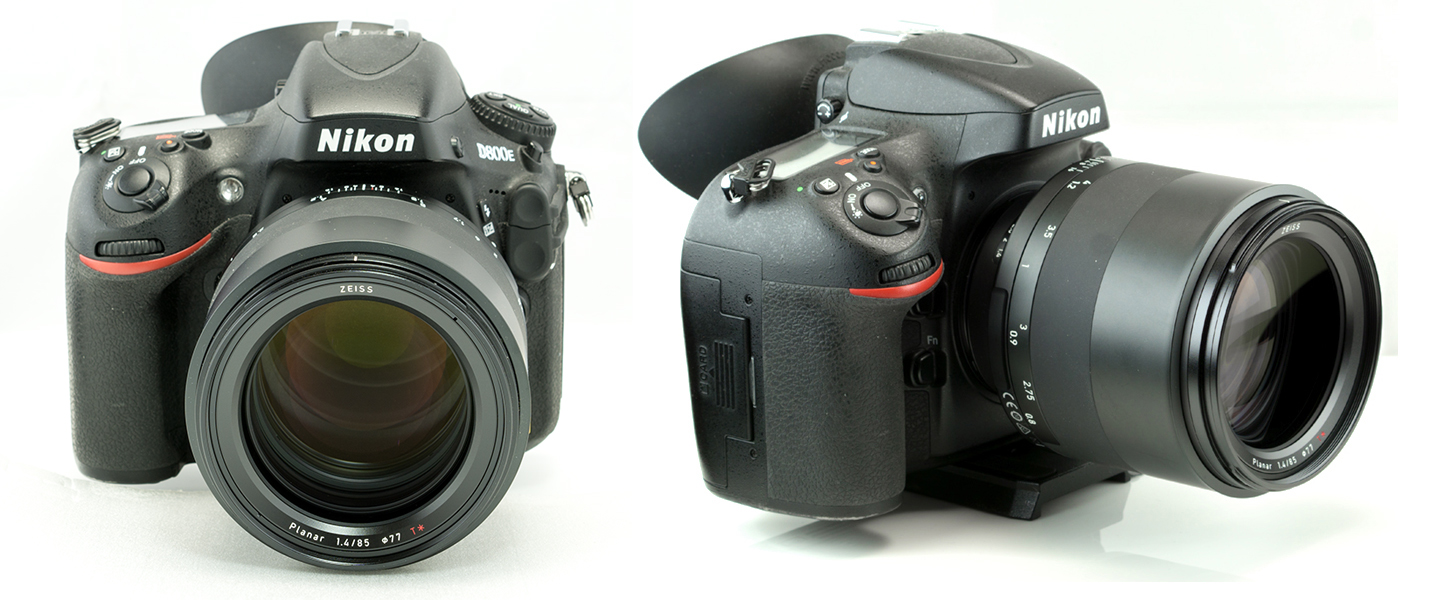
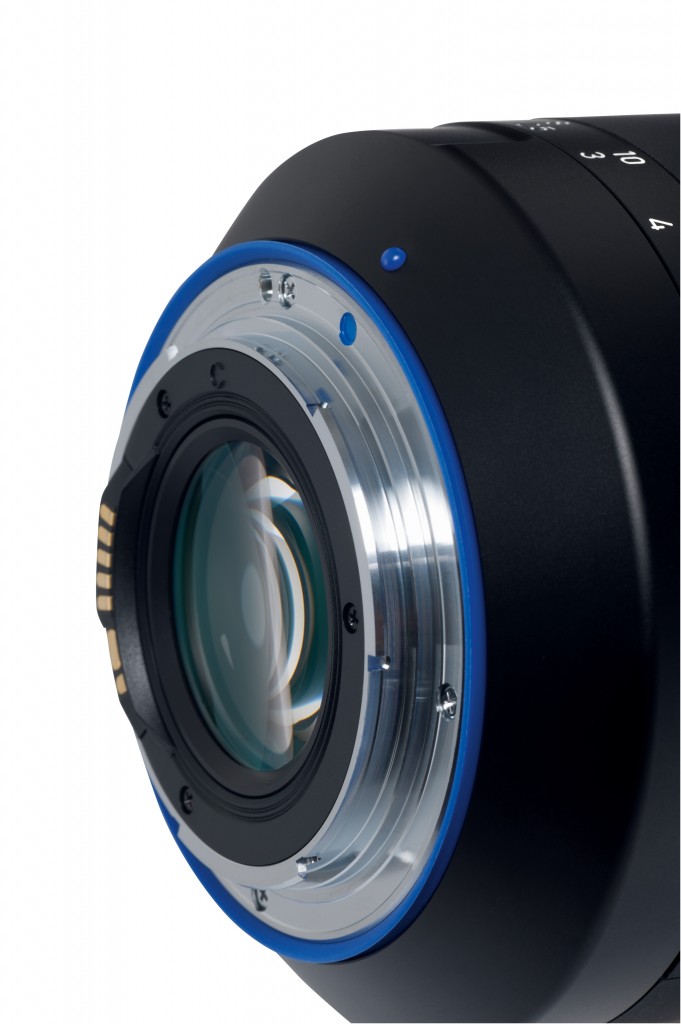
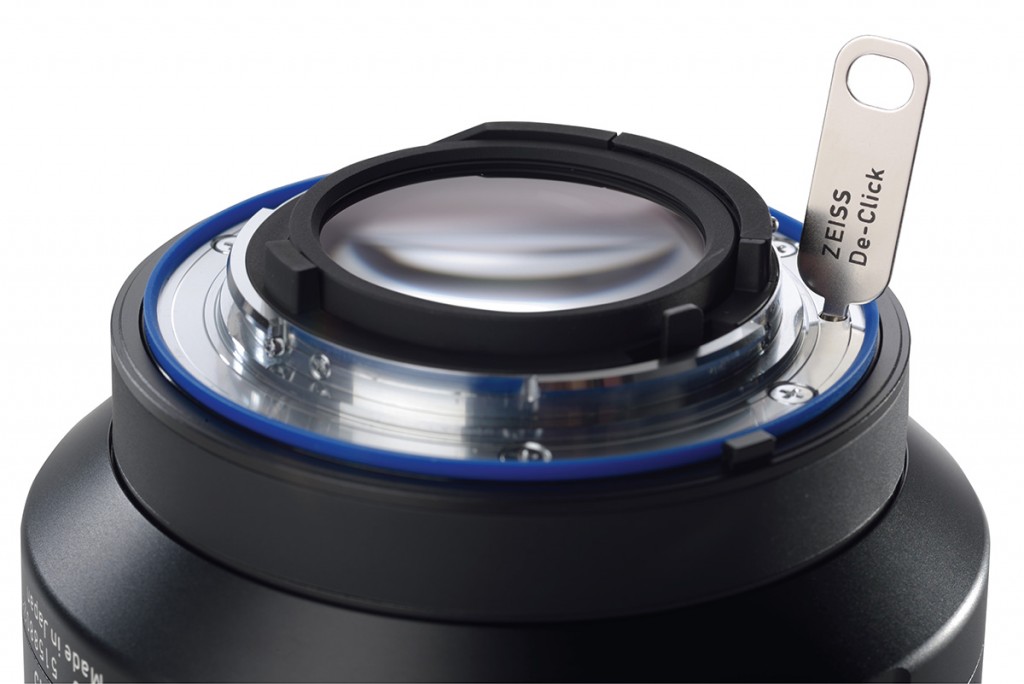
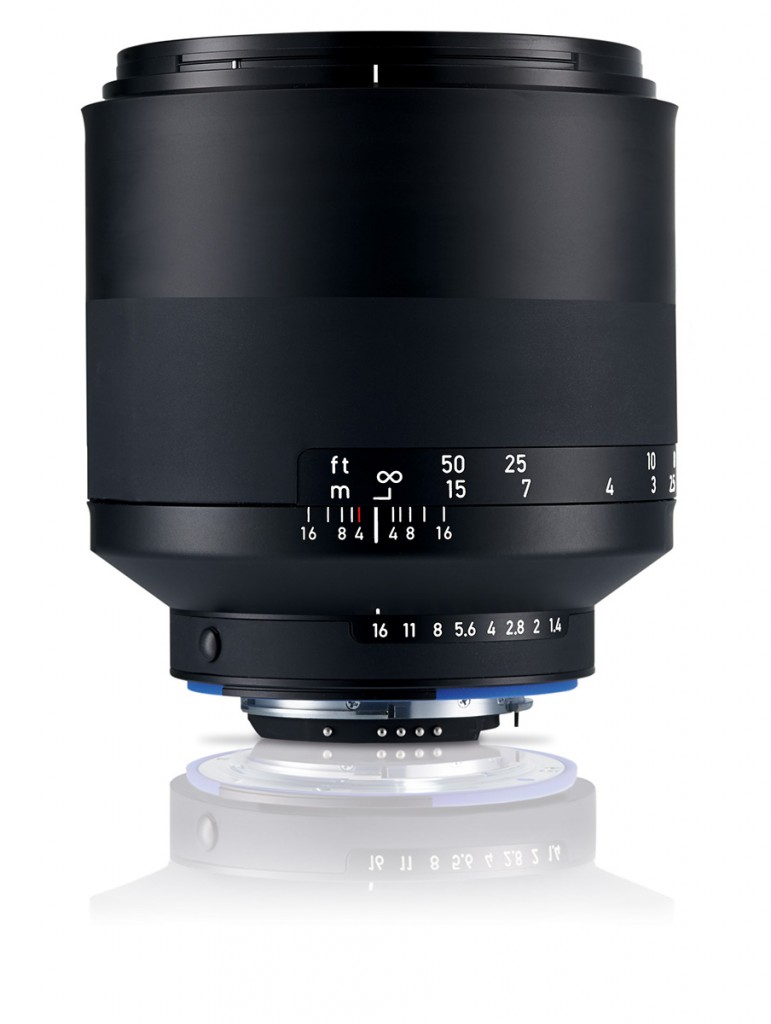
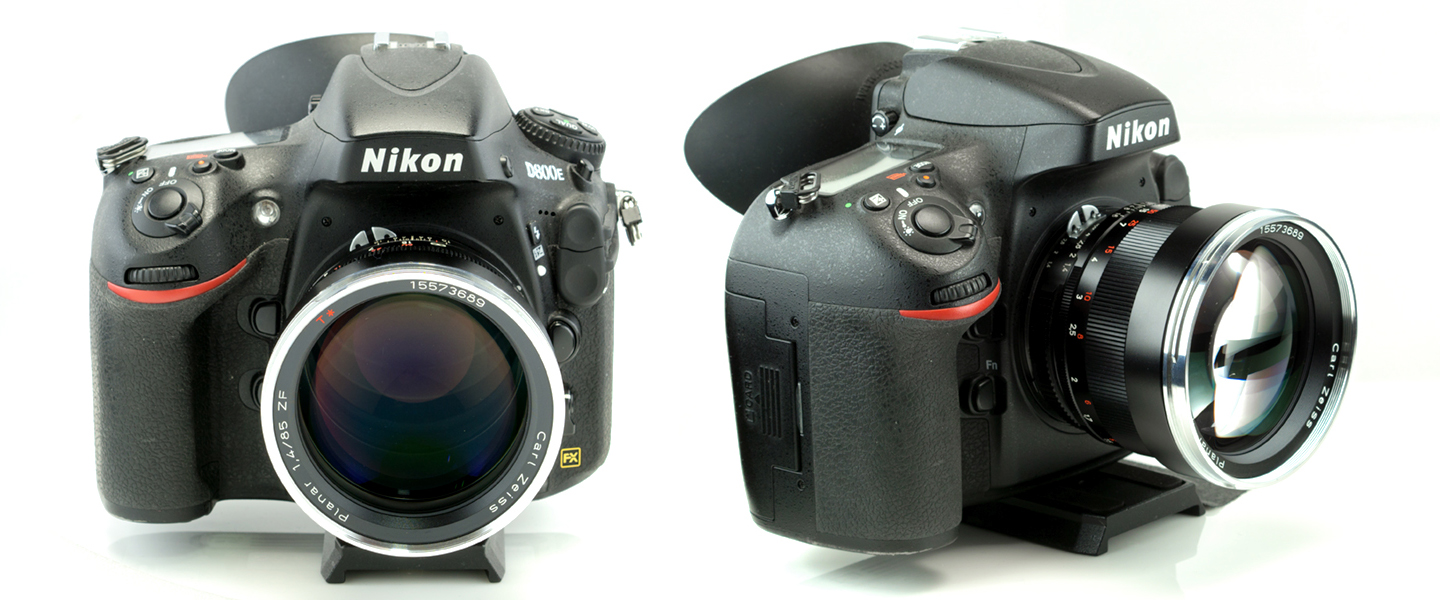
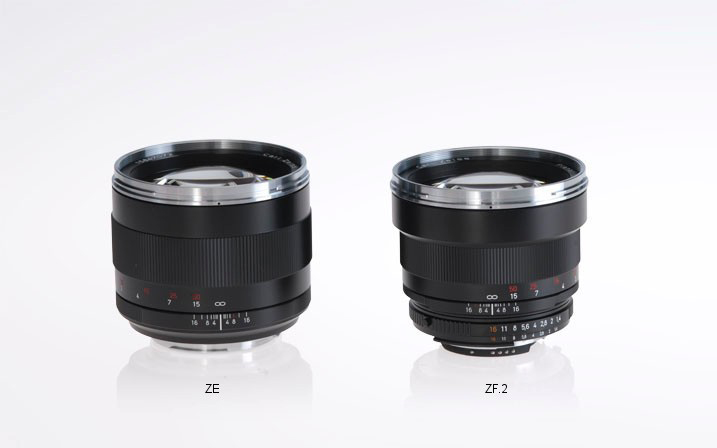
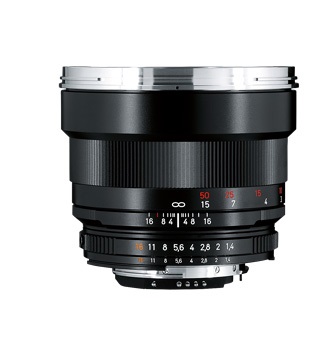
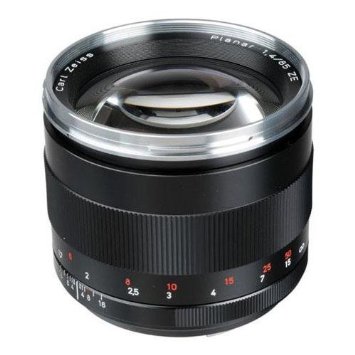
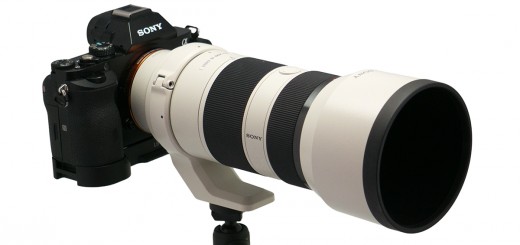
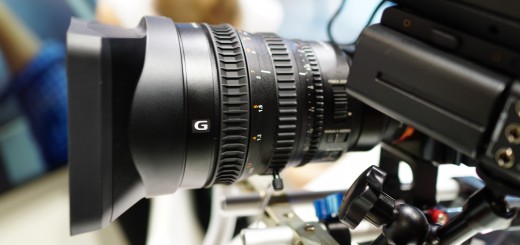
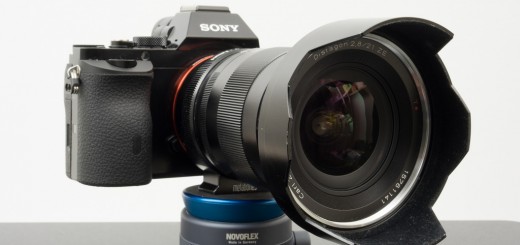













Outstanding work, but it just highlights the paradox of the two higher-end lenses: you can’t focus them reliably on Nikon DSLRs and they don’t really mount well on the Sony Alphas – the only mirrorless FF alternative. The only discussion I have seen about the Outii on Canon has been from Ming Thien, and then only in passing. Is it possible to get better focusing results on the higher end Canon cameras?
Hi Martin,
thank you for the comment. I tried to focus Otus 85/1.4 on Canon 5DSr with approx. same success as with Nikon D810 e.g. It’s not impossible to acquire critical focus, but the overall resolution (camera + lens) gets so high that tollerance margin for slight misfocus is bellow my capabilities to rely on my focusing technique.
As I wrote in the review, it’s not about having blurred images, but if you don’t get perfect focus, you’ll end with a results that are entering category of slightly softer lenses.
Consider Planar 85/1.4 e.g., because of the spherical (and chromatic) aberration, it has slightly softer image overall. If you slightly shift the focus forward or backward, you won’t see much difference at the pixel level, just. different type of aberration will be more pronounced. If you shift Otus/Milvus, you’ll get similar result as with Planar, and that’s huge difference from the lenses maximum resolving potential.
At the end, you won’t get softer image than with Planar, but you’ll end frustrated, knowing that image could have been sharper…
If you have time to magnify image on the Canon 5DSr LCD and if you can control your shutter speed/subject movement safe ratio, using lenses such as Otus/Milvus makes lot of sense. If you like to work with optical vewfinder as I do, I am afraid that your keepers ratio will be bellow expected. (At wide apertures).
You named it well – it’s kind of paradox that is hard to ignore.
Cheers,
Viktor
It occurred to me on revisiting that there is an alternative body for the Otus lenses – the Leica SL via an adapter. It is reputed to have a very fine EVF. It has the heft to balance with an Otus lens. It is not _that_ much more expensive than Nikon D5 or the Canon 1DX Mk II. Now the Outii are actually less expensive than the comparable top-line M-mounts.
Fun to try, if you can get your hands on an SL.
Yes, Leica SL would be probably nice alternative, however I don’t plan to buy one, because it doesn’t appeal me at all. EVF DSLR is certainly good concept, but I would rather go with Sony A99 for a 1/4 of the price of that Leica monster.
I also think that other producers will join the trend soon…
Cheers,
Viktor
Unless one is left handed choice as me. It is as if something was built that has an advantage if you are left handed.
Viktor
maybe it’s my impression but it seems that on a mere portraiture rendering, the Milvus lets more light in than the Otus; while light may vary, it seems that all the Milvus faces are about 1/3 or 1/2 stop lighter than the Otus.
Hi Dino,
This is because of the different shutter speeds in the portrait session. Cameras were in aperture priority mode with fixed ISO and shutter speed was changing slightly to adjust for the conditions. Those shots are not meant to be compared technically, rather by overall appearance.
Cheers,
Viktor
A very useful and comprehensive review. Always wondered what I was missing on the Milvus and Otus side from my 85/1.4 Zf.2 Planar. Thank you all.
Thank you Michael for your support.
Cheers,
Viktor
Im thinking about picking up the planar for my a7s. I don’t need crazy resolution for portrait work, and the ergonomics will pair much better with a7 body than if using milvus giant. Did you decide to upgrade, or are you keeping the classic?
Many years later, I ended with Otuses and Sony A7R family. I tend to pick Otus when I shoot in the studio or have overall control of the scene. When I want AF I am using Sony GM 24-70/2.8. I am not shooting wide open that much anymore. I am using f/4 outside and f/8 in the studio in most cases, so that zoom suits my needs.
Really great review of the 3 lenses. I was really surprised at a few of the differences between the Otus and Milvus, though I suppose for well over twice the price, really I shouldn’t be.
I must admit that in the hand I love the Classic Planar T, it is a wonderful lens to hold and focus. I do miss the metal focus ring on the other two lenses. Of course when it comes down to optic, unfortunately it just shows its age.
In the end I bought the Milvus and I have to agree with most of what you have said. It is a great lens optically, though I do have a couple of issue. which I don’t think you mentioned. I don’t particularly like where the rubber ring is placed on the barrel of the Milvus, when focusing I never have my fingers that far back on the lens and I feel it would be better if it was moved slightly further forward (or made wider like the Otus).
The other slight issue I found, was because of the size of the barrel of the lens, it really isn’t that easy to move the aperture ring, when mounted onto a camera. It isn’t a issue with the D800 but mounted to an older film camera. it might be a pain.
With the feel of the focus ring, the Milvus does feel like it give more resistance, than the Otus or Classic new but I have tried a couple of Milvus’s, which have been used as test models and the focus is a little better, so I think with time mine will improve.
Whilst I would love the Otus, it really isn’t that practical and whilst there is a difference optically, really it is just us photographers who really pixel peep that much.
Regarding manual focus. When it gets to 85mm it is very hard to get accurate manual focus with the D800, the camera isn’t designed for manual lenses and it suffers for it (I can generally just get away with my Voigtlander 58mm f/1.4 Nokton). I did buy the Milvus knowing that focus, might be a bit of an issue. To try and help I am using the Nikon DK-17m magnifying eye piece, which does help a little, though not a huge deal. Mainly, intend to use the lens on a tripod, with a pre-planed shot, focusing with the view screen (though I have shot using the view screen hand held and it wasn’t a big problem, as long as I set up the shot before focusing in on the subject) and I was getting very sharp results.
Overall the weather proofing and clickless aperture were pretty compelling in the end and I don’t regret buying the Milvus, even after seeing the test results. For what I want, it ticks all the boxes.
Hi Michael and thank you for the comment.
The ergonomic in general of Milvus isn’t exactly what I’d like it to be and you are right regarding placement of the rubberized focus grip.
There is another possible issue to consider – because the whole barrel (almost) is rotating, when you support the lens by left hand and press the shutter button with the right hand, there can be slight focus shift (camera might move under finger pressure). I am not sure if that happened to me during tests (it does with new Loxia 21/2.8 on Sony A7, and that lens has similar design, but it is much smaller and lighter lens), maybe you can pay little attention to it and let us know what you think, after some use.
I wrote about aperture being too close and not easy to adjust (if needed).
Focusing friction might release in time, another good reason to report back after some use 🙂
I am using DK-17m too, but without huge success.
I think that problem is more pronounced because Milvus (and Otus) are much better corrected for spherical aberration, thus there isn’t that light glow around edges as with old Planar. In practice that means, that if you miss the focus with Milvus/Otus, you’ll end up with blurred image. If you miss it with Planar for the same amount, you might just slightly change the appearance of overall softness and that doesn’t matter much.
All that being said, I think you made great choice. Milvus is 99% of Otus (except for LoCA) at much more affordable price and additional features you mentioned are very important for many.
Cheers,
Viktor
The Milvus particularly the long focus throw was designed with cinematography in mind. Maybe Zeiss felt the Milvus focussing ring has to have a bit more resistence to gain precise focus when using follow focus gears?
I use Zeiss Classic for cinematography and quite frequently I find myself missing the focus by going a little too much or too less when focusing from one distance to another.
Hi Simon,
I don’t think that Milvus line was designed with cinematography users in mind, simply because Zeiss have their own cinematic lenses in the separate lines. There are also few things that producers are trying to accomplish with cine lenses, such as same diamter for matt boxes or specially engraved focus distances in meters and feets…
Long throw simply add to the focusing precision, which is more demanding with higher reolution sensors.
Stiffness of the Milvus focusing is result of moisture and dust protection, as I have learned from Dr. Nasse from Zeiss.
Cheers,
Viktor
Very thorough review! What are your thoughts on the Milvus being paired with older sensors? I currently shoot a 20.2 MP Canon 6D and was considering the 85mm Milvus as an “upgrade” from my current EF85mm f1.8, since I shoot 85mm regularly. Seeing as the Milvus is designed for 30MP and beyond, will I still be able to see the benefits of using the Milvus?
Hi JT,
I think you will profit from the upgrade in terms of IQ, if you manage to lock perfect focus. With Canon 6D you should expect lower keepers rate, because manual focusing with its optical viewfinder will be very challenging and using LCD and LiveView with magnification is cumbersome IMHO.
I would suggest to try with some cheap MF lens how it goes (try Helios 44 – 58/2 e.g.) and if you find your keepers rate satisfying, give Milvus a try.
Canon EF 85/1.8 was very good lens, except for the rather strong axial chromatic aberration (LoCA) and weak back-light performance (loss of contrast, pronounced flaring). Milvus is certainly a step ahead in all IQ departments, except for the focus accuracy, which is hard to achieve with recent digital bodies. (That’s a big advantage of the systems with EVF).
Cheers,
Viktor
Hey Viktor, amazing review! The way you layout the pictures for comparison is fantastic. What do you think about the Milvus 35mm being f/2 and not f/1.4 (as the Classic line)? I am about to buy Milvus 50 and 85, and would really need a 35 to complete the set, but I was wondering if it might be better to wait for a proper f/1.4 version… Thanks!
Thanks Jony P,
Zeiss will surely update their full “Classic” line if for nothing else, than for production optimization reasons. At the same time, I doubt that they will make many optical changes in a recent designs soon. Both Planars – 50 and 85 needed the upgrade because of the recent sensors resolving power, but other lenses including both 35/2 and 35/1.4 should be still fine in that regard. I have both “Classics” 35/2 and 35/1.4 and I actually find slower one to be slightly sharper at comparable apertures. 35/1.4 is a more specialized lens and thus the main question IMHO would be – do you really need that extra stop?
If not, I will go with Milvus 35/2 and if yes, consider Sigma 35/1.4 Art, until Zeiss doesn’t come with Milvus 35/1.4.
Just my 2c,
Viktor
Hello Viktor, I’ve searched the Internet high and low for information about the Milvus 85mm and I was blown away by this detailed comparison, thank you so much! I own the classic planar 85mm and though I do love it’s special rendering and characteristic, the purple and green fringing is way worse than any of my newer Nikon lenses (and noticeable softer too) I tend to stay around f/2. I love the everything about the Milvus update and am almost sold on getting it.
My question to you is, if I may…do you think I’m crazy for wanting to go with the Milvus over the Nikon 85mm 1.4g? I shoot on the D750, I use the magnifying eyepiece, have plenty of expierence manual focusing, but as you know even with that experience I still get a 25% miss rate overall on subjects and I like f/2) in your opinion, if you take price out of the equation can the Nikon 85mm get close enough , sharpness and bokeh and rendering wise to the Milvus to justify getting it and have the better hit rate of keepers? Or is the Milvus special enough to warrant having a bit less keepers over the Nikon? The Nikon does produce some lovely images and rendering but something keeps bringing me back to the Milvus. Any words of advice you could offer would be most appreciated, thanks for your time!
Hi Bryan,
we made this review in an effort to answer questions similar to yours 🙂
In my humble opinion, you will see improvement at f/1.4 in comparison to your Nikkor 85/1.4G, especially in terms of crispness (accutance, edge sharpness, contours) and slightly higher micro contrast. Also bokeh should be somewhat smoother and there will be slight difference in color rendering.
If all that is enough to justify cost of transition should be question that only you can answer.
If there is any chance, that you can rent Milvus for few days, do that before purchase. If not, and you can afford it, go for it and don’t look back.
That’s what I did buying Otus 🙂
Cheers,
Viktor
Thanks for review.
I use for manual lenses ONLY Sony a7rII – it has perfect sensor and frendly manual focusing via amazing EVF. Try it once and you never comeback to DSLR with manual lenses.
Fantastic review. I’ve been looking for a while for exactly this type of comparison. Excellent job.
I have to say I agree with much of your article. Especially with portraiture, there is little these three lens give up to each other. Just looking over some images I did with the Planar 85mm, it’s a fine lens and I love it’s characteristics.
As a fashion/portrait photographer, I rarely shoot above f/2.8 and thus, I’m quite sold on the Milvus. From my research, the Milvus line is supposed to resolve up to 8k video, which is the still equivalent to 50MP. So for at least the next 3 – 5 years, it should be quite a great lens for a while. From what I’ve read, except for the Otus, the Milvus is the best 85mm DSLR lens out there. And it’s not the most expensive either.
As you stated, the purchase of the Otus for you was really an emotional one. As a pro, it’s an investment. I also have to judge it’s ROI. If you’re a busy, full-time pro making really good money on every shoot, then maybe the Otus would be the choice to make. Otherwise, the investment would be better served on the Milvus.
I was incredibly happy with the images I got with my Canon 5D MKII and the times I used the Zeiss 85mm Planar. I look forward to images with a Nikon D810 and the Milvus 85mm 🙂
Thanks Ricardo,
I am sure that you will enjoy new system. At around f/2.8, critical focus shouldn’t be an issue.
Cheers,
Viktor
Hi Viktor,
Thanks for the incredible review! I am about to acquire the Otus 85 and 28 ZF.2 to mount on my A7II, with a Novoflex NEX/NIK F to E mount adapter and the ASTAT/NEX tripod collar. Since you are an experienced user of the combination (in the article you mentioned the best solution to focus the Otus is on the Sony A7x bodies), perhaps you can enlighten me on the following?
1) Is it a safe combination given the amount of torque (1+kg) pulling on the mount (since it’s not natively mounted) all the time? Is supporting the bottom of the lens at ALL times necessary to prevent any mount warping?
2) Is the ergonomics completely impractical and how hard is it to focus in actuality? (e.g. wide open at f/1.4 with focus magnification and focus peaking)
Many Thanks and Regards,
Oliver
Hi Oliver,
combination that you are after is indeed – front heavy. For shooting, I always use my left hand to support the lens. I basically lean the whole weight on that hand, using right hand very lightly, just to maginfy focus and press the shutter.
Don’t get me wrong, I don’t think that camera mount will brake easily. I am using Sony A7r with Canon TS-E 17/4 L over three years extensively (camera has over 200K actuations and still going strong btw) and I hold it often for the body only and it still doesn’t show any wobbling in the mount. A7ii has stronger mount (metal support) and it should be able to carry weight of the Otus and adapter but holding such a combo will be very uncomfortable, considering thin body and heavy front ballance. Shooting from the tripod is always better with the collar.
Hope it helps,
Viktor
Outstandig job! My only concern is D800 and D810 are known for lens calibration issues. Every lens must be tested for this even if is manual focus. Green dot tells you when is in focus BUT maybe that’s not true even for Auto focus lenses. Cheers!
Thank you so much for this comparison! I realize it has been a couple of years, but I am curious if you have any thoughts about my specific situation. I shoot occasional studio portraits, but mostly I am interested in an 85mm prime for photographing my artwork (oil paintings on canvas). In this case, I am usually stopped down to around f/10, and it is not a challenging situation like backlighting. I need the images to be sharp from corner to corner, but the color rendering is also equally important. In this situation, would you say that the Classic Planar is more on par with the newer Otus and Milvus, or is there still a noticeable difference in overall sharpness and color fidelity? I am looking at these three Zeiss lenses and perhaps the hopefully-coming-soon Nikon 85mm 1.8 S lens, since I am shooting on a Z7. I currently own a Nikkor 85mm f/1.8G, which is plenty sharp, but I find the color rendering to be worse than Nikon’s 24-70 S kit lens. I should probably just rent all four lenses and see for myself, but even renting starts to get expensive Anyway, thanks again for the great writeup!